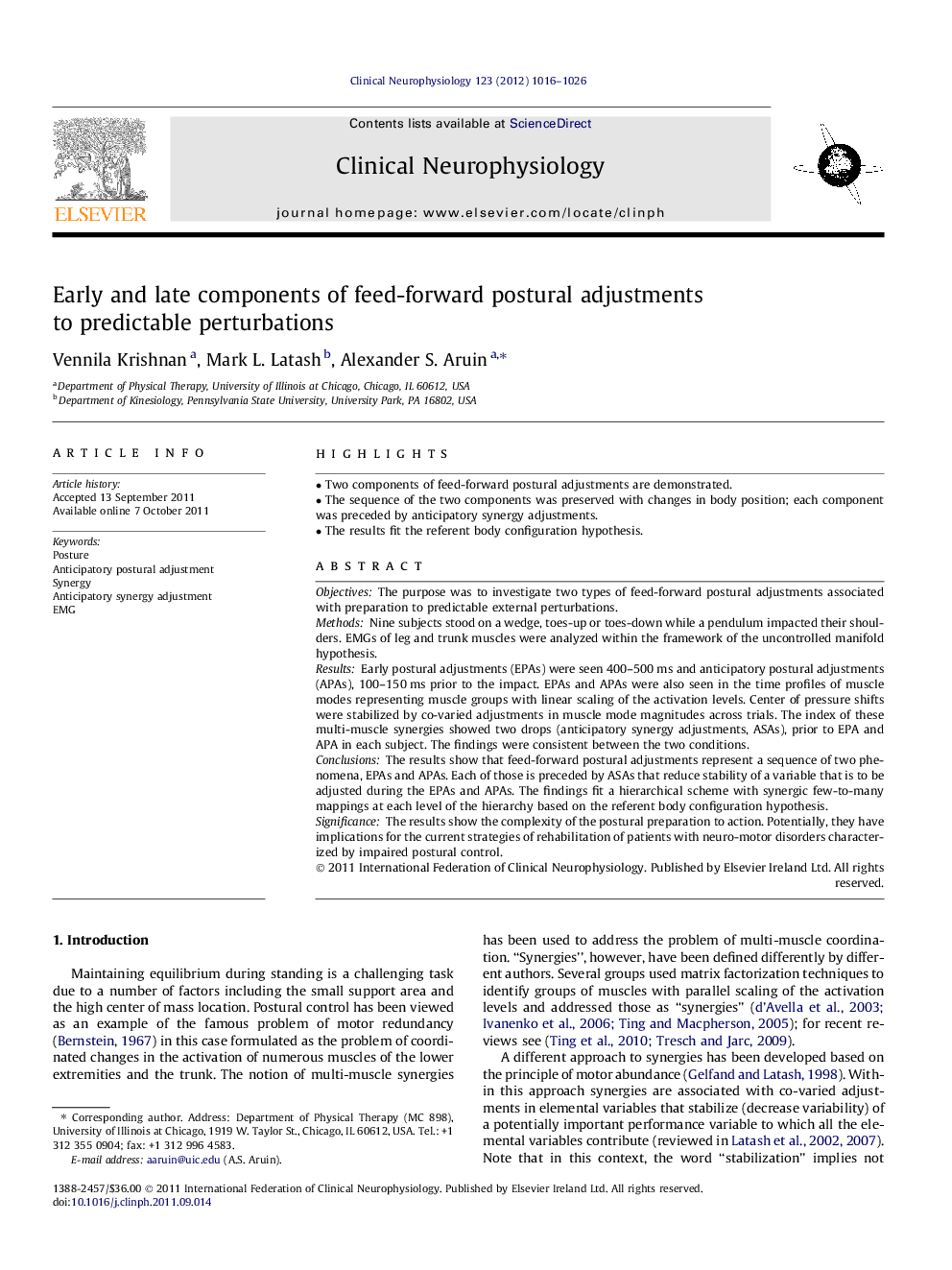| Article ID | Journal | Published Year | Pages | File Type |
|---|---|---|---|---|
| 3045296 | Clinical Neurophysiology | 2012 | 11 Pages |
ObjectivesThe purpose was to investigate two types of feed-forward postural adjustments associated with preparation to predictable external perturbations.MethodsNine subjects stood on a wedge, toes-up or toes-down while a pendulum impacted their shoulders. EMGs of leg and trunk muscles were analyzed within the framework of the uncontrolled manifold hypothesis.ResultsEarly postural adjustments (EPAs) were seen 400–500 ms and anticipatory postural adjustments (APAs), 100–150 ms prior to the impact. EPAs and APAs were also seen in the time profiles of muscle modes representing muscle groups with linear scaling of the activation levels. Center of pressure shifts were stabilized by co-varied adjustments in muscle mode magnitudes across trials. The index of these multi-muscle synergies showed two drops (anticipatory synergy adjustments, ASAs), prior to EPA and APA in each subject. The findings were consistent between the two conditions.ConclusionsThe results show that feed-forward postural adjustments represent a sequence of two phenomena, EPAs and APAs. Each of those is preceded by ASAs that reduce stability of a variable that is to be adjusted during the EPAs and APAs. The findings fit a hierarchical scheme with synergic few-to-many mappings at each level of the hierarchy based on the referent body configuration hypothesis.SignificanceThe results show the complexity of the postural preparation to action. Potentially, they have implications for the current strategies of rehabilitation of patients with neuro-motor disorders characterized by impaired postural control.
► Two components of feed-forward postural adjustments are demonstrated. ► The sequence of the two components was preserved with changes in body position; each component was preceded by anticipatory synergy adjustments. ► The results fit the referent body configuration hypothesis.
